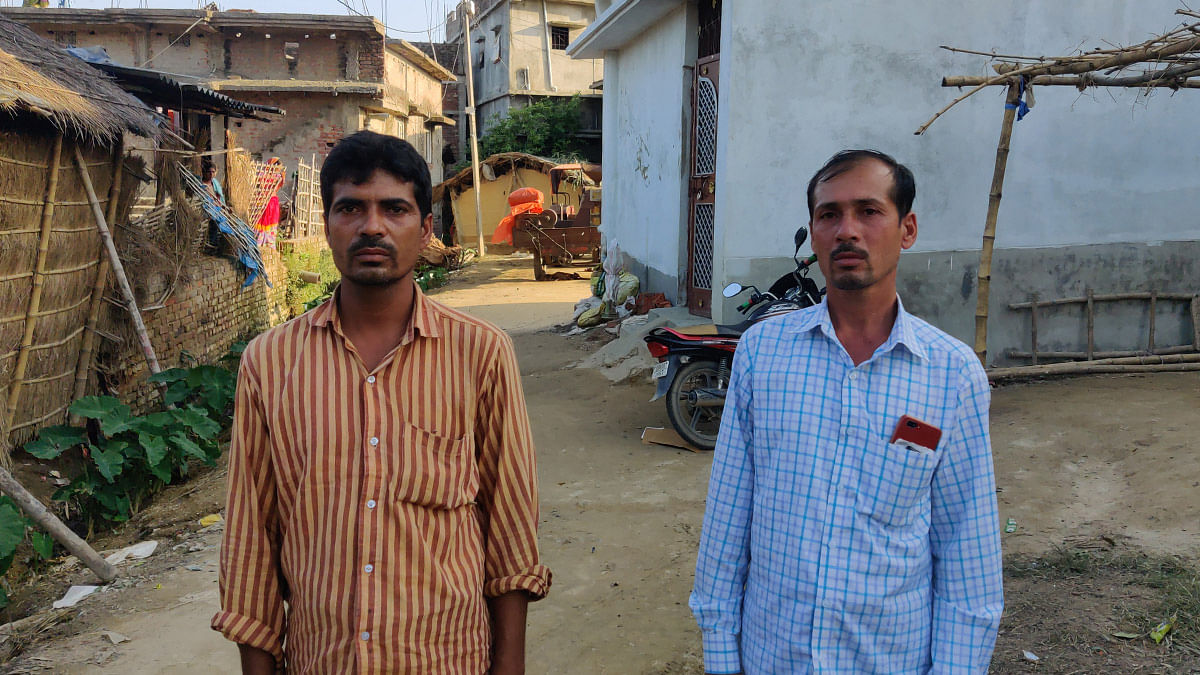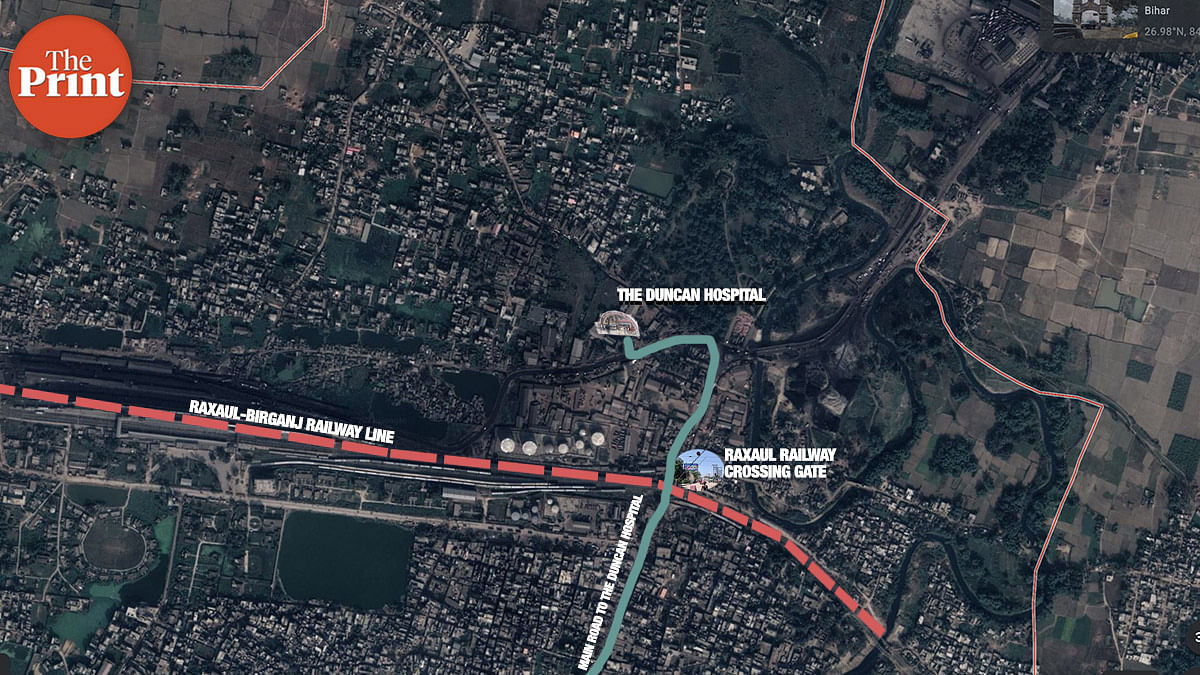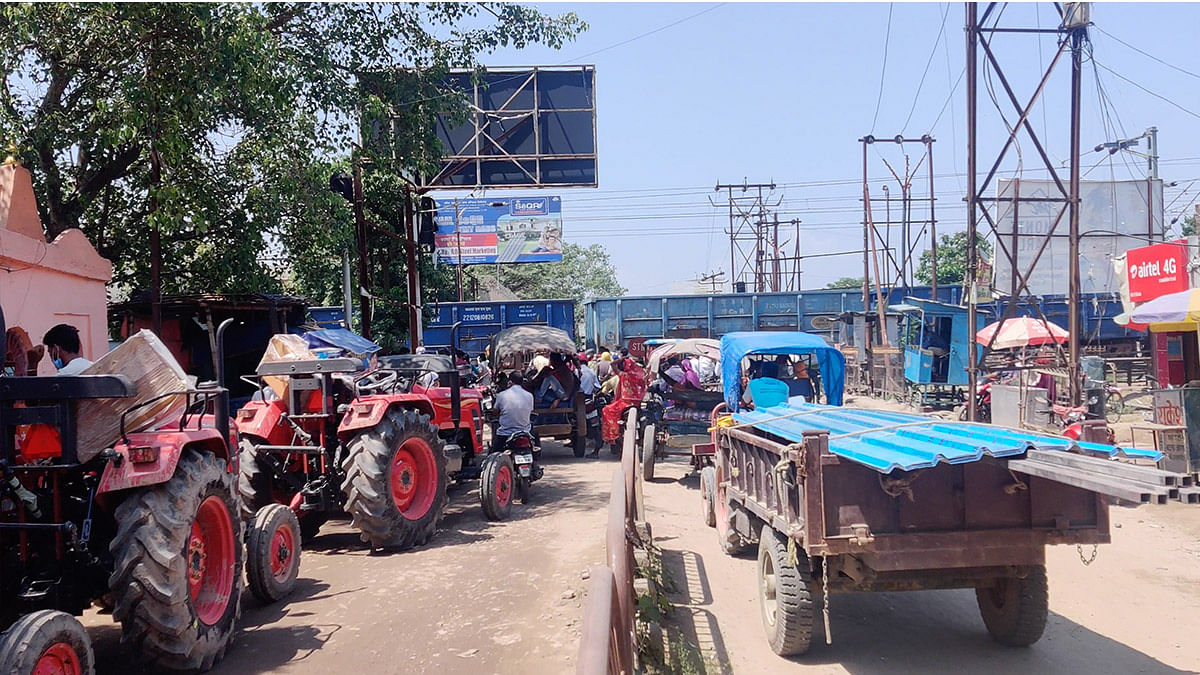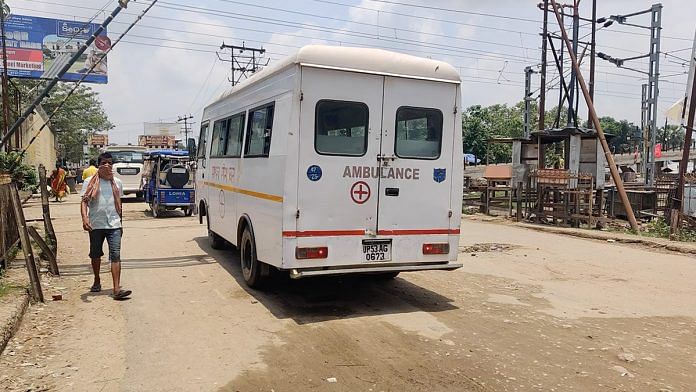Raxaul: Riyaz Aalam, 38, broke down in the middle of a sentence as he talked about his deceased wife, Shahana Khatoon, who died of a heart attack on 1 June. Every time Alam’s voice faltered, his brother Wahab Mia took up the conversation.
“It feels like we have lost our chhat (the roof of a house) in a storm. We have nothing left,” said both brothers, who live in Bihar’s Hardiya village.
On Wednesday morning, Shahana, 30, woke up as usual and prepared breakfast for the family. Around 7.50 am, she fell unconscious in the family’s four-room, single-storey house.
Wahab, a rice mill owner, called an ambulance and by 8.30 am the two brothers were on their way to the closest hospital — the Duncan Hospital in Raxaul — with Shahana.
“On the way, she was slurring. I couldn’t understand a single word she said,” recalled a broken Riyaz, who works as a scrap dealer.

The distance between Haridya and the Duncan hospital in Raxaul — the town is on the Bihar-Nepal border — is approximately 6 kilometres. It took the ambulance 45 minutes to reach the Raxaul railway crossing. The hospital is just 700 metres from the crossing. But the ambulance carrying Shahana had to wait for almost 15 minutes at the crossing for a freight train to pass.
When the family reached the hospital, at 9.50 am, doctors declared that Shahana was no more. “Doctors at Duncan Hospital told us that if we had reached just 15 minutes sooner, they might have been able to save her,” said Wahab.
Shahana’s is not an isolated case of a patient dying on the way to the hospital, and the culprit every time is the railway crossing.
ThePrint saw two ambulances, on 1 and 2 June, waiting at the crossing for five and eight minutes, respectively.

Probhu Joseph, managing director of Duncan Hospital, also told ThePrint that they get “three to four cases a month where patients die on the way to the hospital, while waiting at the crossing”. This, however, is a “rough anecdotal number”, he said.
The hospital has another access point, but that too is intercepted by a railway crossing, he added. The crossing en route the main access road to the hospital is busier because it is attached to the Raxaul Junction railway yard where trains are shunted — a process of switching lines for repair work — washed or parked.
According to rough estimates provided by officials at the railway crossing, nearly 500-600 passenger and goods trains pass through this crossing for tracks leading to the Raxaul Junction station.
Almost 60 per cent of the India-Nepal trade passes through this Raxaul-Birganj railway line, which connects to the Raxaul dry port to the Birgunj dry port in Nepal.
A senior Railways officer told ThePrint that it was one of the busiest crossings in India.
“I cannot deny that often it blocks the road for a long time and at times we unfortunately get to hear of deaths at the crossing. It makes me sad,” he said.
Another senior official in East Central Railway said it was a humanitarian problem and the only solution was the construction of a road overbridge.
Also read: Bihar family hides mom’s Covid infection from villagers, but feeds 600 at her funeral feast
The way to Duncan
The Duncan Hospital at Raxaul was built in 1930 by a Scottish missionary to cater to patients from both Bihar and Nepal. The hospital has 200 beds and departments include obstetrics & gynaecology, general medicine, surgery, paediatrics, orthopaedics and intensive care.
It has been designated as a dedicated Covid care facility.
The railway crossing also comes in the way of timely medical attention needed by the Covid patients coming to the hospital.
The hospital has so far treated approximately 260 Covid patients patients in the second wave, of which 220 have recovered and 40 succumbed to the virus. The hospital currently has 20 Covid patients who are undergoing treatment. East Champaran district, of which Raxaul is a part, has recorded a total of 20,735 Covid cases since the pandemic began. There have been 327 deaths in the district.
The Raxaul–Amlekhganj line predates the hospital by three years — established in 1927, it is part of the Delhi–Lucknow-Gorakhpur–Raxaul–Birganj line.
The day Shahana died, ambulance driver Vishal Kumar recalled, the freight train that they were waiting to pass “first went towards the lane switch area and then came back towards the Raxaul Junction, which created even more delay” for them.
The hospital has another alternate road, but that would have entailed a detour of 5 km and is also intercepted by another crossing on the same line.
Ambulance drivers told ThePrint that 5-10 patients die every month on an average owing to delays at the crossing.

“Jab bhi patient leke hospital ki taraf jata hai, mein prarthana karta hun hi railway dhala bandh na ho (Every time I carry a patient to the hospital, I pray that railway crossing it’s not closed,” said Adit Patel, an ambulance driver.
In a case similar to Shahana’s, Umar Ansari, another ambulance driver, got a call from the Sitaram Prasad Memorial Trust Hospital, also in Raxaul, about a patient who had been referred to Duncan. The distance between the two hospitals is about 3 km and the drive should ideally take 5-10 minutes. But there is the railway crossing on the way.
“After picking up the patient from SRP, I found that the crossing was closed. I had to wait for 30 minutes before I was able to make my way out of the queue of vehicles waiting there and take the alternate route, which was 5 kilometres away. There is another railway crossing on that route and that too was closed. After repeated requests by me and the patient’s family members, the gateman opened the crossing and we were able to drive on,” he said.
But Umar later got to know that the patient was declared “brought dead” by doctors at Duncan.

Hiralal Yadav, who drives an ambulance for SRP Hospital, said it was normal for him to witness delays and in some cases deaths due to delays at the crossing.
“At times people have to wait for hours to get here and we get to hear that people have died while waiting at the crossing,” said Dr Prabhu, adding that patients who need intubation or antidotes for snake bites are especially at risk.
The Railways official quoted above said he has “instructed the gatemen to try as much as possible to save lives by opening the line when it’s safe”.
An overbridge to circumvent the railway crossing is also being constructed. But that will only help light traffic such as two-wheelers and auto-rickshaws avoid the crossing, he added.
Ambulances would still have to negotiate the same route, he said.
(Edited by Poulomi Banerjee)
Also read: ‘We travel 22km to send a WhatsApp’ — vaccine slot a distant reality for 118 Bihar villages






